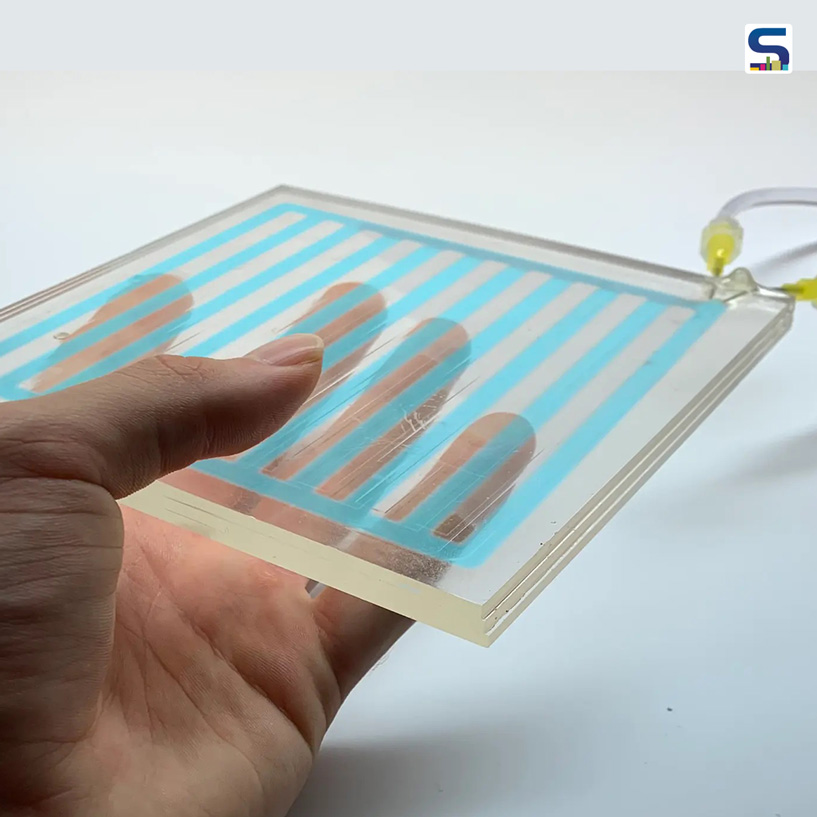
Researchers from the University of Toronto (Engineering) recently developed a multi-layered fluidic system inspired by the colour-changing skin of organisms like squid, which has the potential to significantly reduce energy costs associated with heating, cooling and lighting buildings. The system utilizes micro-fluidics with flat sheets of plastic containing channels through which fluids can be pumped. Here is a detailed report on SURFACES REPORTER (SR).
Customized pigments or particles mixed into the fluids control the wavelength, intensity and dispersion of light transmitted through windows. The sheets can be stacked in multiple layers, each responsible for a different optical function and small digitally-controlled pumps can optimize light transmission by adding or removing fluids from each layer.
Developed by Kay and the team, led by Professor Ben Hatton (MSE) and including PhD candidate Charlie Katrycz (MSE) and Professor Alstan Jakubiec (Daniels Architecture), the prototype consists of flat sheets of plastic that are permeated with an array of millimetre-thick channels through which fluids can be pumped. Customized pigments or other particles can be further mixed into the fluids to control what kind of light gets through such as visible and near-infrared wavelengths.
Compared to existing technologies like automatic blinds or electrochromic windows, the developed system offers greater control over the type and direction of light and is cost-effective as it uses simple off-the-shelf components. The system has the potential to save significant amounts of energy with simulations indicating that covering a building with a dynamic facade could result in annual energy savings of up to 50 per cent for heating, cooling and lighting. The researchers are also exploring the possibility of using artificial intelligence for optimizing the control algorithms of the system and are working on scaling up the technology to cover entire buildings.
The study aims to encourage more innovative approaches to managing energy in buildings, as buildings are one of the largest consumers of energy globally. The use of smart materials for buildings has the potential to revolutionize energy efficiency in the built environment and reduce the environmental impact of buildings.
The work has been built on another system that uses injected pigment, which had been developed by the same team earlier this year, and published in Nature Communications. The previous study drew inspiration from the colour-changing abilities of marine arthropods, while the present work is more analogous to the multi-layered skin of a squid.
Image credit: University of Toronto (Engineering)